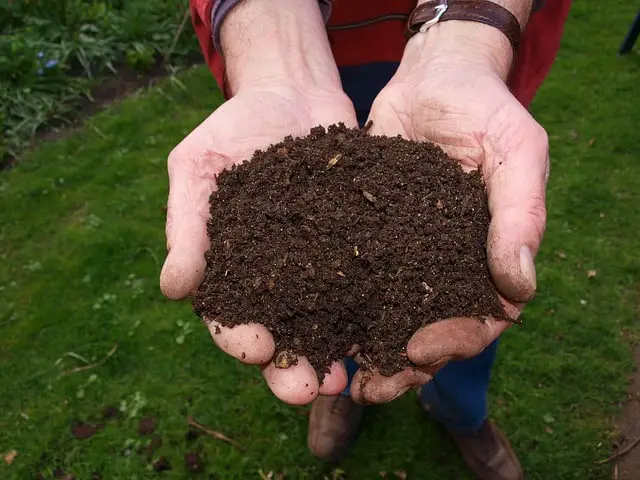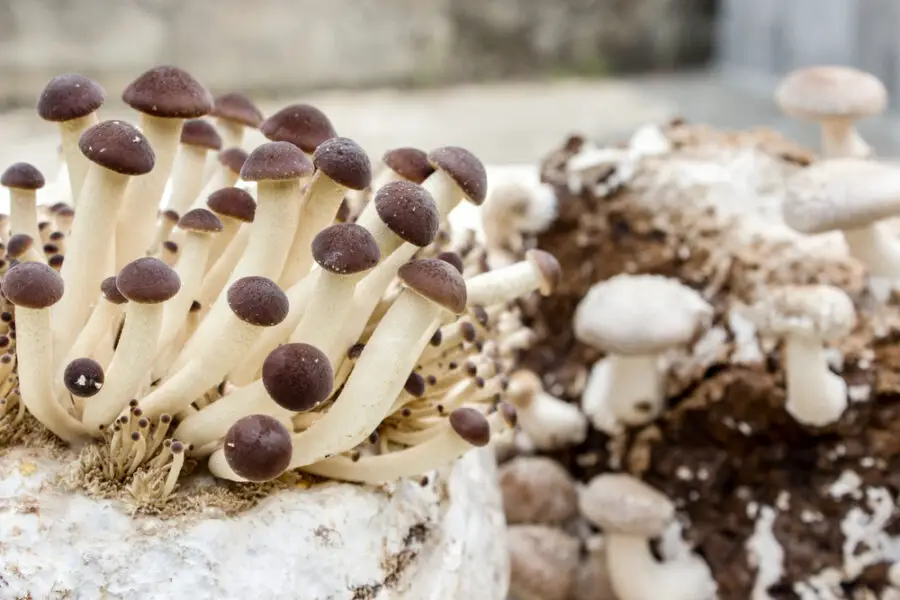The best place to find morels in Missouri are at river beds, moist woody areas and south-facing slopes. You can also find them around dead elm trees, disturbed/burned areas or old orchards. These locations are plentiful throughout the state and you can find them almost anywhere in Missouri.
However, whenever you locate an edible morel in the wild, ensure you are 300% positive about the mushroom’s identification. Unfortunately, there are a couple poisonous mushrooms that look like morels, but they are not.
What Conditions Are Necessary for Morels to Grow in Missouri?
The most optimal conditions to find morels in Missouri are when the daytime temperatures reach around 50°F with nighttime temperatures around 30°F to 40°F. They’re common in wooded areas where there are elm, ash, apple, sycamore and hickory trees. Trees that are dead or dying will often have morels nearby.
Because the color of morels blends in with the forest floor, if you find one, it’s advisable to look around for others. It’s likely more morels will be in the vicinity.
Also remember that morels need warm, moist soil. So, in the earlier parts of the season, like in March and early April, they’ll often be on western or southern slopes at higher elevations. Mid-April into May will most likely hang around northern slopes.
Where in Missouri Can You Find Good Morel Hunting?
“The Great Morel” is a website online with a live interactive map where people report their morel sightings. The following is a list of all the location they have so far:
- Ava
- Ballwin
- Belton
- Benton
- Berger
- Bloomfield
- Blue Springs
- Brighton
- Carl Junction
- Chadwick
- Chillicothe
- Columbia
- Country Club
- Curryville
- Danby
- Douglas County
- Eagle Rock
- Foristell
- Harrisonville
- Jamestown
- Marceline
- Marshall
- Meadville
- Perryville
- Portland
- Raytown
- Revere
- Silex
- Springfield
- St. Louis
- Stover
- Sugar Creek
- Sunrise Beach
- Town and Country
- Unionville
- Warsaw
- Wentzville
- Wildwood
- Wright City
When Is It Morel Season in Missouri?
Morel season in Missouri is in early spring. This can begin as early as March and go all the way into the beginning of May. But, April tends to have the best and most plentiful selections throughout the state.
Can You Pick Morels in Missouri State Parks?
Yes, you can pick morels in Missouri state parks and other conservation areas. However, each spot will has its own regulations for this. So, it’s important to check with the particular park or conservation area before you go.
Can You Pick Morels from Someone’s Private Property in Missouri?
If you find morels on someone’s property that doesn’t belong to you, you must get permission before you begin collecting. There are laws about trespassing, so it’s best to get the property owner’s permission in writing.
Can You Pick Morels in National Parks in Missouri?
In most cases, you can pick morels in national parks and heritage sites throughout Missouri. But, like with the state parks, it’s always best to check with them ahead of time to know what their regulations are, if any.
How Many Morels Can You Harvest in Missouri at One Time?
As a general rule, never take more morels than you can consume. This means about one or two pints, but no more. However, certain parks, conservation areas and other such public lands may have specific rules about the amount. Therefore, it’s important to check before you begin your hunt.
What Should You Bring Along When Hunting Morels in Missouri?
When you go hunting for morels in Missouri, there are a few items you should wear and bring along with you. First, use a mesh bag or other type of well-ventilated container. This will keep the morels fresh while you hunt around for others.
You should wear a pair of gloves and use a knife or scissors to cut them at the base, but not below the soil. This will help to guarantee their return the following year. Don’t forget to bring a little insect repellent with you on your morel hunt.
It’s also ideal to wear orange when you go deep into the woods to find morels. This is because morel season coincides with turkey hunting season. You want to avoid hunters by being as visible as possible.
What Kinds of Morels Are Available in Missouri?
There are three edible types of morels available in Missouri. These are Black, Half-Tree or the Yellow Morels (aka Common Morel). Each is distinct in cap shape and color, which helps make it a bit easier to locate specific varieties. All three will have a hollow stalk and prefer similar habitats.
- Black Morels: These morels are black to brownish black on the cap with a honeycomb-like appearance.
- Half-Tree Morels: Unlike other morels, the honeycomb shape of the cap is a little smaller and has black-brown ridges with yellowish brown pits. They will also appear detached from the stalk that is white in color.
- Yellow (Common) Morels: As the name suggests, these morels are yellow. But they can also be brownish or grayish. They have a cap shaped in a similar ways as a honeycomb.
Are There Any Mushrooms in Missouri that Look Like Morels but Aren’t?
Yes, there are two varieties of mushroom that look like morels but they are not. Also called False Morels, they are the Gabled False Morel and the Big Red Morel. These can be very lethal; at the very least, you will be incredibly ill after ingesting one of these.
Unlike true morels, False Morels have a cap that has a pattern similar to the brain in an animal or a human. They will be irregular and misshapen. The other difference is that these types of False Morels flourish in the warmer parts of spring through early autumn. Real morels only grow in the earliest parts of spring.
This is why it’s advisable to make sure you take a few morel mushroom hunting classes with the Missouri Department of Conservation. Also, check with a professional mushroom hunter to help positively identify your morels.
Hi, I’m John Stephens, chief editor and writer for Totalgardener.com. I’ve been gardening and raising animals for over 15 years starting with a small backyard plot in Northern Virginia where I grew corn, potatoes, squash, and using a high mulch technique called the Ruth Stout Method. I also raised ducks and small mammals for meat and eggs in a movable pen similar to the ones used by Joel Salatin. I later moved to Colorado where I experimented with growing greens using aquaponics inside. I eventually added a microgreens setup and home sprouting operation. I’m excited to share everything I’ve learned plus more from the other local gardening and animal raising experts I know.



